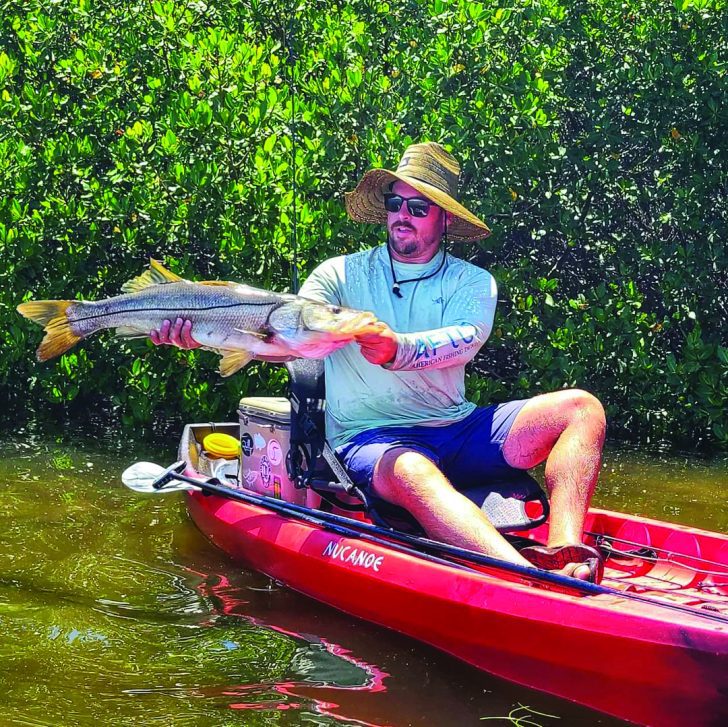By: Brendon Allen

The first thing a prospective kayak fly angler needs to do is select the right type of kayak, and without question, the right choice is a sit-on-top kayak. These kayaks are durable, offer ample storage, self-drain, and most importantly, provide stability and peace of mind while casting. Fly casting requires movement, and the stability these kayaks offer allows you to spend more time concentrating on your cast and less time thinking about tipping over. Additionally, many sit-on-top kayaks are so stable that they allow you to stand, making it easier to cast and sight fish.
Next, there are a few strategies that can be used that will simplify and improve the quality of your time on the water. To start, keep a clean, open deck so your fly line doesn’t have anything to get tangled up with. All tools, gear, and loose items should be stowed away so that you can easily cast and retrieve your fly line. A general rule is that if there is somewhere for your line to get caught, it will 100% get caught. This, in addition to a stripping basket or mat, will greatly reduce your chances of getting frustrated and allow you to focus on what you’re there to do – fish.
Furthermore, stealthiness is the greatest advantage a kayak angler has, so it is important not to lose that while fly fishing. Making sure your tools are easily deployable and stowable when spotting a fish will help in achieving this goal. Specifically, make sure your paddle can be stored in a location where it won’t interfere with your casting, and position your anchor pin within easy reach so you can quietly deploy it into the water when needed. You will be doing this often, so developing a system that works for you will help you seamlessly move from spotting fish to making that perfect cast without scaring the fish away.
Fly fishing from a kayak is not easy, but a large part of enjoying this type of fishing is embracing the challenge. With the right equipment, strategies, and practice fly anglers can enjoy all of the benefits kayak fishing has to offer. As you gain experience, you’ll discover the joy of exploring remote waters, the satisfaction of landing fish with stealth, and the unique connection to nature that kayaking and fly fishing provides.

